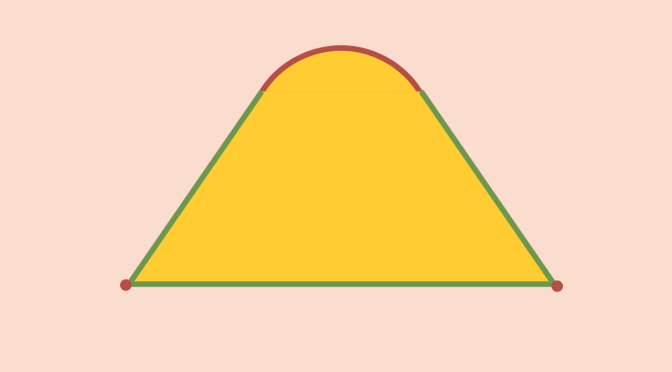In the theory of functional analysis, the Krein-Milman theorem states that for a separated locally convex topological vector space \(X\), a compact convex subset \(K\) is the closed convex hull of its extreme points.
For the reminder, an extreme point of a convex set \(S\) is a point in \(S\) which does not lie in any open line segment joining two points of S. A point \(p \in S\) is an extreme point of \(S\) if and only if \(S \setminus \{p\}\) is still convex.
In particular, according to the Krein-Milman theorem, a non-empty compact convex set has a non-empty set of extreme points. Let see what happens if we weaken some hypothesis of Krein-Milman theorem.
The closed unit ball of \(L^1([0,1])\) has no extreme points
Consider the vector space \(L^1([0,1])\) of all equivalent classes of Lebesgue integrable functions defined on \([0,1]\). \(L^1([0,1])\) is a Banach space equipped with the norm \[\Vert f \Vert_1 = \int_0^1 \vert f(t) \vert dt\] Hence \(L^1([0,1])\) is a separated locally convex topological vector space.
We prove that the closed unit ball \(B\) of \(L^1([0,1])\) has no extreme points. First, it is easy to prove that \(f \in B\) with \(\Vert f \Vert_1 < 1\) cannot be an extreme point. Then consider \(f \in L^1([0,1])\) with \[\Vert f \Vert_1=\int_0^1 \vert f(t) \vert dt = 1\] One can find \(c \in (0,1)\) such that \[\int_0^c \vert f(t) \vert dt = \int_c^1 \vert f(t) \vert dt = \frac{1}{2}\] Let \[f_1(x) = \begin{cases} 2 f(x) & \mbox{if } x \in [0,c) \\ 0 & \mbox{if } x \in [c,1] \end{cases}\] and \[f_2(x) = \begin{cases} 0 & \mbox{if } x \in [0,c) \\ 2 f(x) & \mbox{if } x \in [c,1] \end{cases}\] Then \(f\) is the middle point of the segment \([f_1,f_2]\) whose end points both belong to \(B\).

